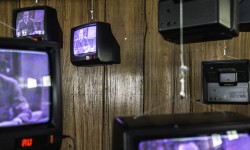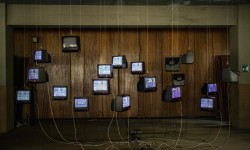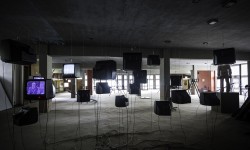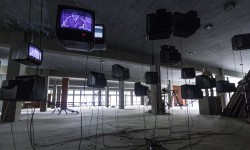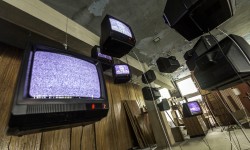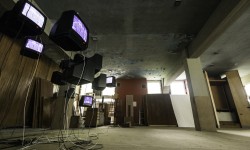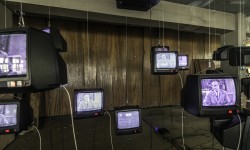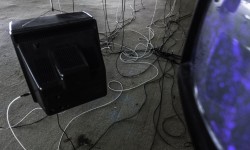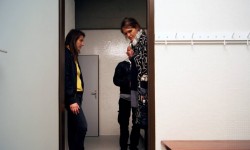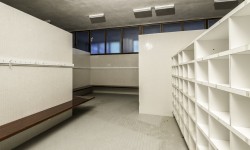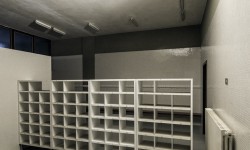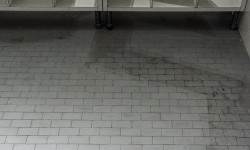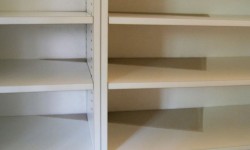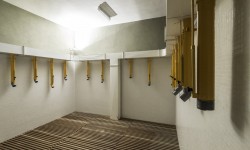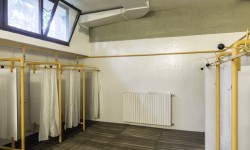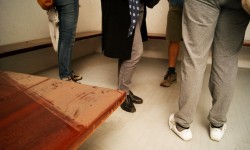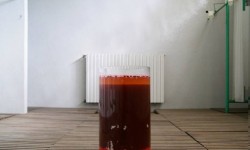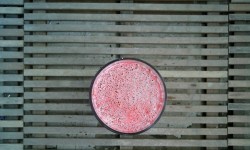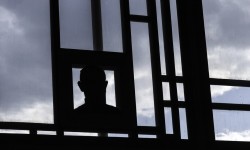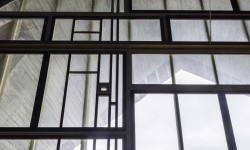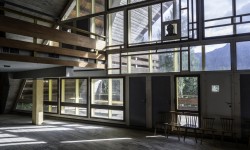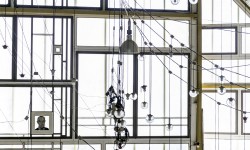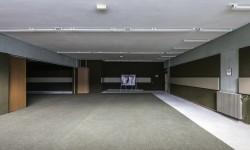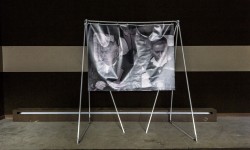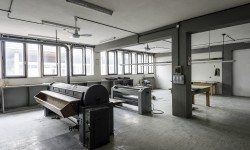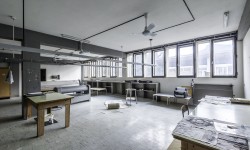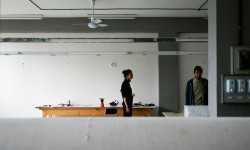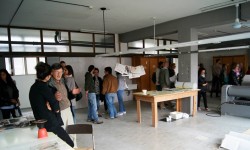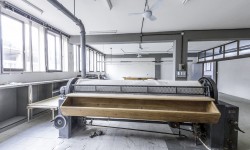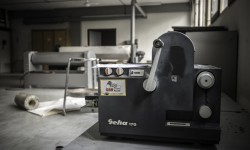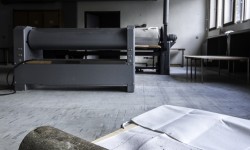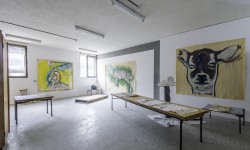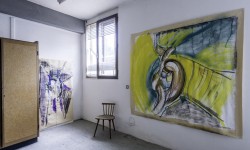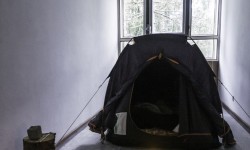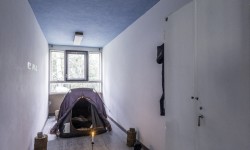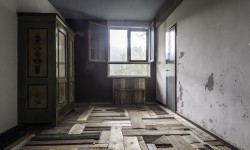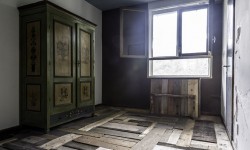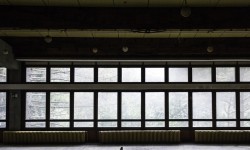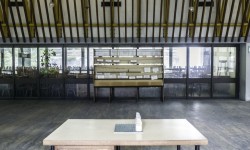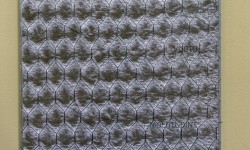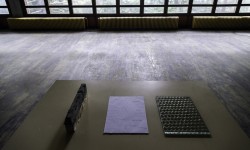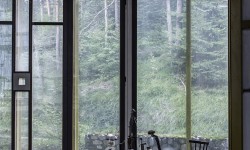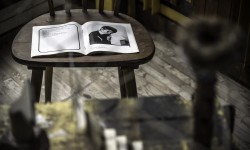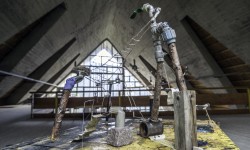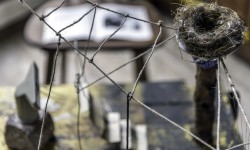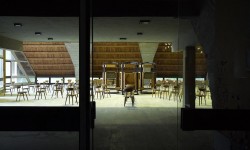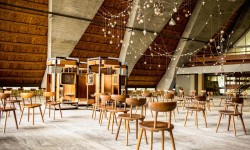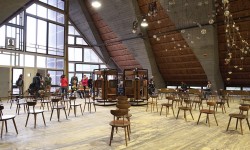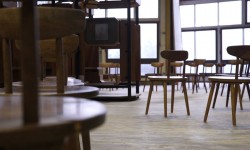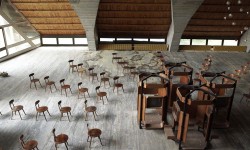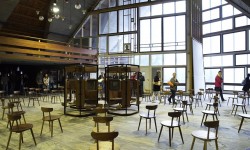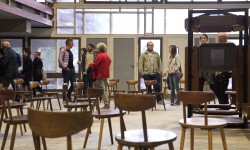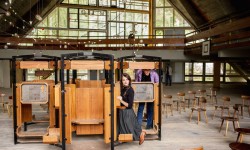Last Saturday, September the 5th, the umpteenth open-studio by Progettoborca took place.
While the other stations of DCTerraforming2015 (Casso and Vas) are loading, and loading some more, finally some authentic (and hard-working) aliens have made themselves known.
On Saturday, then, at 2 PM, the first ones in (so to speak: we never do get out of here; the real first ones), at the Colonia (Eng.: summer camp building), were the people of Landscape Stories, photographic workshop with Domingo Milella.
At 3 PM, the titanic asset’s maw (as it is a breathing being, not a lifeless object) have snapped open, swallowing down everyone. More than 2.300 people have passed through the Colonia; how about that.
And the Colonia has changed, and keeps on changing, every day, every moment.
The Colonia is the now the cornerstone of the vibratile Village, and Progettoborca is the heart of the upheaval process (and of Terraformazione) launched a year ago. The meaning of the process is contained between two opposed spanning extremes: a diabolical 3D postcard with two snarling groundhogs, that look like furry burgers, and the contempt for every kind of subsidence (going up).
In the Colonia there are no frames, artworks, exhibits: we don’t like them much, these dry, little, wooden words; better a lash to the oculomotor and the channelization of fluids, finally unbound.
There are, thus, demonstrations, presence, sharp glances, here, epiphanies and proedures (this is the word), even before paths and tales (procedures don’t need to script themselves in an explicit plots: procedures are simply ideas in the words, and ideas in the works are very far from being factual states and from the other areas of leveling down).
Often, in fact, even depending on who is looking, something that happens is that a potential ends up scarring over, necrotizes, gets paralized into a static image, a picture, let’s say, i.e. the passive representation of a crystallized state: but here, we’re saying, we’re inside a motion, and in exactly that resides the chatacteristic of processing: process is motion (and real motions are, however, faculties typical of those who know how to stay, and don’t keep themselves amused with vacuous and pretentions declarations of mobility – the nomadic genius of the get-going, as that prosaic, cannibalistic, rude turist of exoticisms of Chatwin, the moleskine to the office worker, the short sleeves of the intelleco-peacock, the prose of the caveman).
Going back to things, though, before people get distracted (what people, for that matter? Don’t we always say that the only real things are ideas? And then? But we can’t always be completely real, isn’t that so? Of course we can: we must): we’ve all gone in, and there were this things-ideas, alight, a must-see.
The installation by Domenico Antonio Mancini, first, in the large hall of the AS Pavilion, from which we can access the spatial body of the trembling Colonia.
Nineteen Mivar television sets*, unused for years, modified and reactivated, Mattei‘s face at the centre of all of them, talking with no voice, waiting the second phase of this installative work, a performative one, at the Bear’s Cage, and there its title will eventually be understood: La Versione di Misha (Eng.: Misha’s Version). And, here, Antonio, our electrical enlightener (Idrotermolux), was the one to bring the light.
At Domenico’s side, Urban Hero, one of Fabiano De Martin Topranin‘s statues, not alone in the hall anymore.
On the ground, facing the pillar (while the pillar-trees of the posthumous jungle of the Antelao stand outside), a gellner-pasolinian protosculpure (a trace) by Aleksander Velišček.
Then, the human snake began to move, up the first ramp, to reach the area for the clothes distribution, where Silvia Hell has performed, in the Female Showers, the installation Cleanland, strong and thin, sharp and yet secret in its corners, at least some of them: perceptibility isn’t objectivity, but the function of a kind of explorative hunger, instead, without which only matches on TV remain (seek the lights, the shadows, the dust, and stop looking for a tagline; we’re alone in the world, and we must build the gear). And here, too, the light was brought by Antonio, our omnipresent electrical enlightener.
Next to Cleanland, in the Male Showers, is on the other hand the first fragment of the Slovenia Pavilion (Vanja Mervič, Luka Širok, Aleksander Velišček, Špela Volčic; with the patronage of the Slovenian Ministry of Culture), which is coming along, well deployed, atomically scatteredd. It’s the installation Volume Moles by Luka Širok. Chromatic fluids with different densities have been found in the nooks and crannies of the Colonia. Waters, juices, oily substances, fats, 20-yesr-old drinks. A series of glasses and glass containers have emerged from the monster’s belly, too, which every day gives back objects and relics, like storm at the beach. The liquids in the containers, in stratified colours, inside the showers, in the soap holders. An effervescent table (or what’s left of it: that, too, is from back in the day) is picked up with latex gloves, and immersed into the liquid. And the fuilds, the masses and densities, move, mix together, a slow boil, reminding us of Martian settings (Robinson Crusoe on Mars, seen yesterday), and extra-galactic volcanic exploits (in the sci-fi movies from the two-year period between ’57 and ’58, in which we wallow every night).
Then, at the infirmary, before the chromatic curtains by Stefano Moras, for whom no scrap is ever waste, and always formal-nurishing principle, here comes the re-assembled floor by Aran and Bruno, two of the students of the Fine Arts Academy of Venice, whom Marta Allegri has brought to Borcia, with the Repair, take care workshop, and the wardrobe halved by Nicola‘s blade, which now towers, whole, on the composit raft of recovered wood (very Michael Johansson, we’ll show him), between an icon and a buck, thanks for the gift, guys, Christopher is doing great, too, and says thank you along with us.
In the next room, Mattia Pajé prepared his auto-terraforming cycle – A – n- T, 72 straight hours inside the Colonia, night and day, to hear the sounds, to feel and perceive everything that is part of that still, great body, when nobody is around.
Then back at the laundrette, where Andrea Visentini, from whom some sonofafemaledog has stolen six beautiful watercolour pieces (we’ve talked about that already), not at all defeated, has devised two new sculptures, which is now completing, and a little further down, still in the laundrette, the original dryer, thanks to Sofia, has become a printing press, and the pizza trays from back in the day have become the first engraved plates, and there it is, then, the experimental printing and engraving lab of Borcia, and we’ll make good use of it, too.
Going back up to the dining hall, then, we find the research plant by Giorgio Barrera, Barbara De Ponti, Filippo Manzini, and their artist book-prototype: soon they will be here again, developing. The chairs aren’t there anymore, in their place, behind the glass; where then? In the Auditorium, well terraformed, dear people, and it was about time.
In the phenomenal Auditorium, in fact, many and different things have happened.
Talkonfession, the great piece by Michelangelo Penso, has stolen the scene for a day. The four wooden confessionals, originals by Gellner, the eighty original chairs by Fantoni, the thirty recorden interviews, intellectuals’ coices mixed to those of the people of Borca, recounting a polyphonic idea of the Confession, other than the (confessed) history of the relationship of the community of Borca and this Village, of alinen-likenesses and in-comprehension.
Moreover: blessed be Antonio, by now our essential electrical enlightener: the Auditorium had been dark since ’91, when the Colonia was declared unfit for use. But on Saturday, the light came back and spread once again in the air of this sharp upturned keel, warming the wood and concrete to the ceiling, and projecting out the gigantic glass wall De-stijl, to water the forest, shining in the wet and dark night.
(this text must be continued: we might use it as a exhibit-file. This sentence isn’t a forgotten draft note)
Translator’s notes:
*Made in Italy televisions sets. The last of its factories closed down in 2014.

